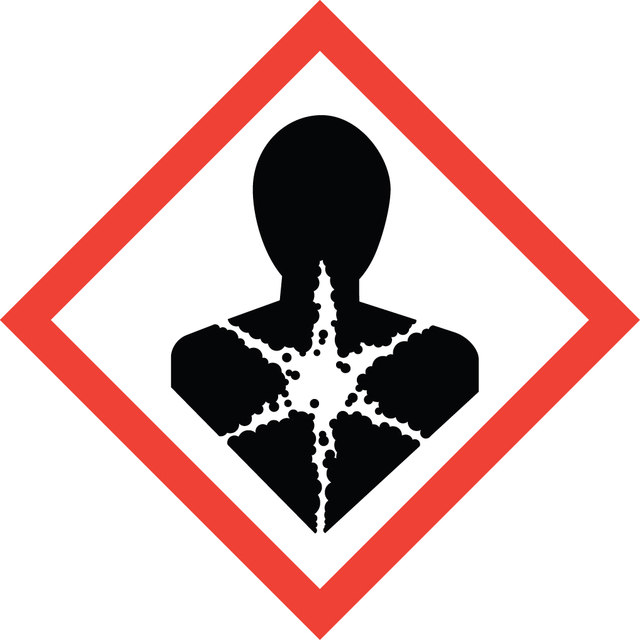Sign In to View Organizational & Contract Pricing
Select a Size
About This Item
CAS Number:
MDL number:
UNSPSC Code:
12352204
NACRES:
NA.54
biological source
spinach
Quality Level
form
partially purified powder
specific activity
0.01-0.1 unit/mg solid
mol wt
557 kDa
storage temp.
−20°C
Related Categories
General description
D-Ribulose 1,5-Diphosphate Carboxylase (RUBISCO) amounts to 50% of the total spinach leaves associated soluble protein.
Exists as a 557 kDa hexadecamer composed of eight heavy chains each with a molecular weight of approximately 56 kDa and eight light chains of molecular weight 14 kDa. Each molecule contains one magnesium ion.
pH optimum: ~7.9.
KM for CO2: ~0.45 mM.
Ribulose diphosphate becomes inhibitory at concentrations exceeding 0.7 mM. Orthophosphate and ammonium sulfate are competitive inhibitors. 3-Phosphoglycerate is a noncompetitive inhibitor.
pH optimum: ~7.9.
KM for CO2: ~0.45 mM.
Ribulose diphosphate becomes inhibitory at concentrations exceeding 0.7 mM. Orthophosphate and ammonium sulfate are competitive inhibitors. 3-Phosphoglycerate is a noncompetitive inhibitor.
Application
D-Ribulose 1,5-Diphosphate Carboxylase from spinach has been used:
- as a test protein in pepsin digestion studies
- as an innocuous or non-hazardous protein sample to test its effect on human intestinal epithelial cell lines
- in isothermal titration calorimetry (ITC), and radiolabeled binding assays with abscisic acid
Biochem/physiol Actions
D-Ribulose 1,5-Diphosphate Carboxylase (RUBISCO) depends on Rubisco activase and chaperones for activation. It participates in plant photorespiration events by catalyzing the carboxylation and oxygenation of ribulose-1,5-bisphosphate. Abscisic acid inhibits the carboxylation activity of Rubisco.
Other Notes
One unit will convert 1.0 μmole of D-RuDP and CO2 to 2.0 μmoles of D-3-phosphoglycerate per min at pH 7.8 at 25°C.
Signal Word
Danger
Hazard Statements
Precautionary Statements
Hazard Classifications
Resp. Sens. 1
Storage Class Code
11 - Combustible Solids
WGK
WGK 1
Flash Point(F)
Not applicable
Flash Point(C)
Not applicable
Personal Protective Equipment
dust mask type N95 (US), Eyeshields, Gloves
Regulatory Information
动植物源性产品
This item has
Choose from one of the most recent versions:
Already Own This Product?
Find documentation for the products that you have recently purchased in the Document Library.
Ma Linglan et al.
Biological trace element research, 122(2), 168-178 (2008-01-15)
Characterized by a photocatalysis property, nanoanatase is closely related to the photosynthesis of spinach. It could not only improve light absorbance, transformation from light energy to electron energy, and active chemical energy, but also promote carbon dioxide (CO(2)) assimilation of
Alena Jirásková et al.
International journal of molecular sciences, 24(13) (2023-07-14)
Bilirubin has potent biological beneficial effects, protecting against atherosclerosis, obesity, and metabolic syndrome. The aim of this study was to assess serum bilirubin concentrations and (TA)n and (GT)n microsatellite variations in the promoter regions of the UGT1A1 and HMOX1 genes
Libor Vítek et al.
Antioxidants (Basel, Switzerland), 11(11) (2022-11-12)
Oxidative stress and inflammation contribute significantly to atherogenesis. We and others have demonstrated that mildly elevated serum bilirubin levels protect against coronary and peripheral atherosclerosis, most likely due to the antioxidant and anti-inflammatory activities of bilirubin. The aim of the
Hiroyuki Ishida et al.
Biochimica et biophysica acta, 1837(4), 512-521 (2013-11-26)
Chloroplasts are the primary energy suppliers for plants, and much of the total leaf nitrogen is distributed to these organelles. During growth and reproduction, chloroplasts in turn represent a major source of nitrogen to be recovered from senescing leaves and
Maya Kremien et al.
Proceedings of the National Academy of Sciences of the United States of America, 110(22), 8978-8983 (2013-04-24)
Soft corals of the family Xeniidae exhibit a unique, rhythmic pulsation of their tentacles (Movie S1), first noted by Lamarck nearly 200 y ago. However, the adaptive benefit of this perpetual, energetically costly motion is poorly understood. Using in situ
Related Content
Our team of scientists has experience in all areas of research including Life Science, Material Science, Chemical Synthesis, Chromatography, Analytical and many others.
Contact Technical Service